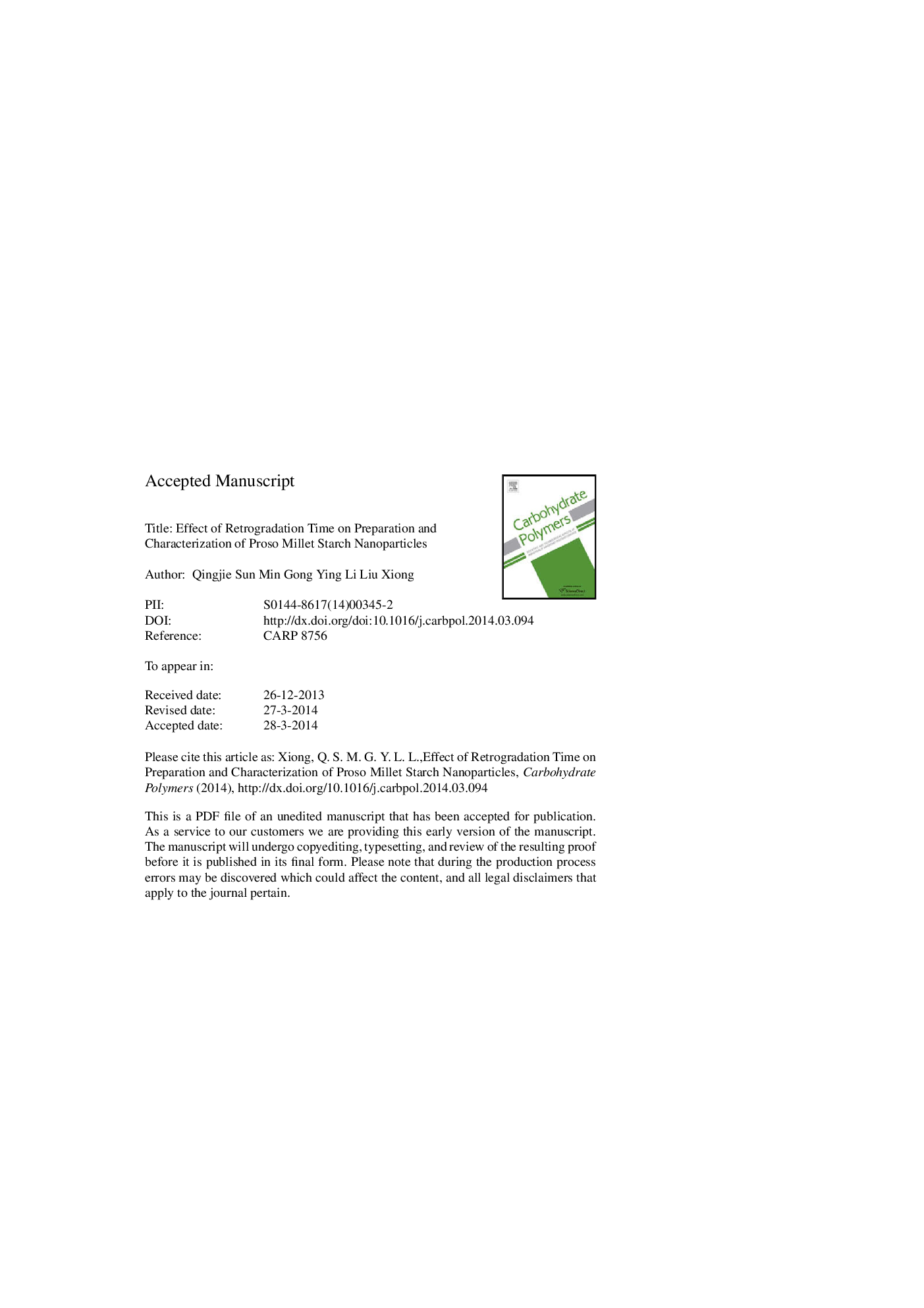| Article ID | Journal | Published Year | Pages | File Type |
|---|---|---|---|---|
| 7791331 | Carbohydrate Polymers | 2014 | 27 Pages |
Abstract
Starch nanoparticles were prepared from proso millet starch using a green and facile method combined with enzymolysis and recrystallization. Scanning electron microscopy (SEM), X-ray diffraction (XRD), Fourier transform infrared spectroscopy (FTIR), differential scanning calorimeter (DSC) and thermal gravimetric analysis (TGA) were used to characterize the morphology and crystal structure of the starch nanoparticles prepared with different retrogradation time (0.5, 4, 12, and 24Â h). The results showed that the sizes of the starch nanoparticles were between 20Â nm and 100Â nm. The crystal pattern changed from A-type (native starch) to B-type (nanoparticles), and the relative crystallinity of the nanoparticles increased obviously, as compared with the native starch. The nanoparticles prepared with the 12Â h retrogradation time had the highest degree of crystallinity (47.04%). Compared to conventional acid hydrolysis to make starch nanoparticles, the present approach has the advantage of being quite rapid and presenting a higher yield (about 55%).
Related Topics
Physical Sciences and Engineering
Chemistry
Organic Chemistry
Authors
Qingjie Sun, Min Gong, Ying Li, Liu Xiong,
